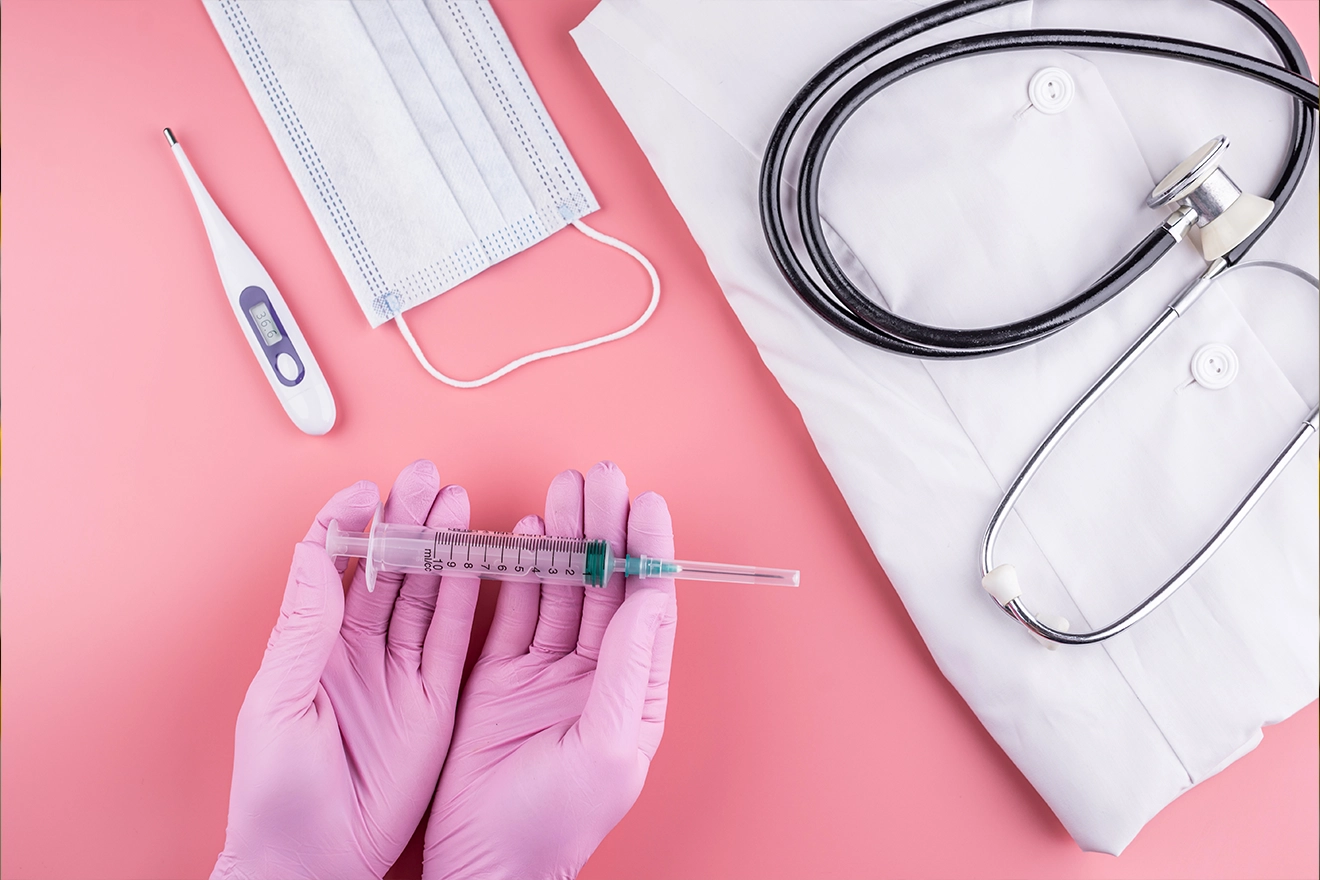
Introduction
The In Vitro Diagnostic Medical Devices Regulation (IVDR) ensures the safety and efficacy of In Vitro Diagnostic (IVD) medical devices, which include test kits, reagents, and equipment for diagnosis and monitoring of diseases. To place an IVDR medical device in the European market, manufacturers must obtain CE marking. One of the critical aspects of the IVDR is the introduction of a standardized system of codes, known as IVDR codes, which play a crucial role in the conformity assessment application process. Conformity assessment of medical devices under Regulation (EU) 2017/746 may require the involvement of conformity assessment bodies designated under Regulation (EU) 2017/746 to carry out such assessment.
Designating Devices with IVDR Codes
IVDR codes are assigned in accordance with Regulation 2017/2185 In Vitro Diagnostic (IVD) devices and Notified Bodies (NB) by the designating authority. IVDR codes are a set of codes assigned to medical devices based on the type of device in question, the manufacturing process used for the device, and the individual technology used by the device (for instance, the use of sterilization methods, nanomaterials, etc.). They are also assigned based on the design and intended purpose of the device. While these codes are assigned to various types of IVD devices, NBs must ensure that they are fully capable of assessing the devices assigned with the IVDR codes. The codes can be assigned by either of the following:
- Manufacturers, once they have taken into consideration all the parameters of the device and are certain that NBs can verify the accuracy of the assigned codes.
- NBs can directly assign the codes.
Designating NBs with IVDR Codes
The designating authority assigns IVDR codes to NBs, who in turn assign them to their appropriate teams of resources as well as to the manufacturers of IVD devices. For an entity to be called a medical device NB, they will have to be authorized by the designating authority as qualified for carrying out conformity assessments on various types of IVD devices. IVDR codes are highly beneficial, as they ensure that all the requirements laid down by Regulation (EU) 2017/746 are met, that devices assigned with these codes have high-quality technical documentation, and that the process of CE marking is simplified with less rejection rates from NBs.
Understanding IVDR Codes and their Types
IVDR codes refer to the alphanumeric codes for the designation of certain aspects of the IVD devices, which are associated with the conformity assessment to be reviewed by specific resources assigned by the NB and thereby evaluate and appoint appropriate resources to assess the conformity procedure.
IVDR codes are assigned to IVD devices after taking into account various factors that characterize different types of devices. Some of the key considerations are as follows:
- Design and intended purpose.
- Whether the device is for self-testing or near-patient testing.
- Manufacturing processes and technologies used.
- Any device that requires specific knowledge of examination, laboratory, and clinical procedures for product verification.
The codes are categorized into five (05) streams – IVD, IVR, IVP, IVT, and IVS – which are elucidated in Table 1 below.
Table 1: The Five (05) Streams of IVDR Codes
| IVD Code(s) | Application(s) | No. of Codes Applicable for/Allocated to a Device | Relevance Allocation of the Conformity Assessment Team | Example(s) |
| IVR | Codes related to the design and intended purpose of the device. | Only one (01) code per device. | NB personnel involved in the review of technical documentation and in conducting audits related to the product. | IVR 0106 – devices intended for blood grouping.
IVR 0202 – devices intended for tissue typing.
IVR 0403 – devices intended for human genetic testing. |
| IVS | Codes related to specific characteristics of the device. | Zero (0) to any number of codes per device. | NB personnel involved in the review of technical documentation and in conducting audits on special processes or on-site audits. | IVS 1001 – devices intended for near-patient testing.
IVS 1002 – devices intended for self-testing.
IVS 1003 – devices intended to be used in companion diagnostics.
|
| IVP | Codes that require knowledge of examination procedures. | One (01) to several numbers per device. | NB personnel involved in the review of technical documentation. | IVP 3002 – devices that require knowledge of biochemistry.
IVP 3004 – devices that require knowledge of chromosomal analysis.
IVP 3006 – devices that require knowledge of cytometry. |
| IVT | Codes related to various technologies.
| One (01) to several numbers per device. | NB personnel involved in audits (for instance, on-site auditors involved in the auditing of metal processing).
| IVT 2001 – devices manufactured through metal processing.
IVT 2006 – devices intended to be manufactured through chemical processing.
IVT 2005 – devices manufactured through biotechnology. |
| IVD | Codes that require knowledge of laboratory and clinical disciplines. | Zero (0) to any number of codes per device. | NB personnel involved in the review of technical documentation. | IVD 4001 – devices that require special knowledge of bacteriology.
IVD 4012 – devices that require knowledge of virology.
IVD 4009 – devices that require knowledge of molecular biology. |
Note: IVP, IVD, IVT, and IVS codes are assigned to a device only once it has been assigned with an IVR code.
How are IVDR Codes Assigned?
IVDR NBs have a system which ensures that they have an appropriate team of resources and authorization personnel with expertise and knowledge on different features and technologies of IVD devices. IVDR codes are assigned to the appropriate teams who have the capability to carry out conformity assessments of the specific IVD devices. The process of assigning codes is explained below:
- The manufacturer of an IVD device chooses a suitable NB after careful consideration of the device specifications.
- The manufacturer may assign a suitable IVDR code if they have a detailed understanding of the device.
- A formal application must be submitted to the identified NB, with all the specifications of the device related to its design, intended purpose, technology, and manufacturing process. Thus, the application must include all the information that is required for conformity assessments.
- The NB must clearly define the scope of conformity activities and the type of devices that it is capable of assessing.
- The NB will review the application submitted by the manufacturer. The review helps evaluate the capability of the NB, that is, if they have the required resources with the necessary qualifications to assess the device.
- The NB verifies the codes assigned by the manufacturer (if provided), or they themselves assign the device with the IVDR code. The code verified/chosen by the NB will be finalized. The manufacturer and the NB can refer to the explanatory note on IVDR codes provided in the guidance document of the Medical Device Coordination Group (MDCG), titled MDCG 2021–14, and Regulation (EU) 2017/2185, for code allocation.
- Once the application is reviewed, the manufacturer and the NB sign a mutual contract. The NB assigns an appropriate team of resources for the code assigned to the IVD device along with authorization personnel who have adequate knowledge and expertise to perform the conformity assessment procedure.
Exceptions and Limitations
- IVD devices, in some cases, may be composed of multiple components, and it is not possible to limit such devices to a single intended purpose or technology for operation. These devices may or may not fall under the same code (where the components act as a device). In such cases, the strategy of assigning the first applicable code to the devices is not possible. Multiple codes can be assigned to the device after taking into consideration the risk properties of the device. This can be any combination of the five (05) categories of IVDR codes, as per requirements.
- In some cases where IVD devices have performance or safety issues, the auditors must review these aspects carefully. If they do not possess adequately qualified or experienced resources for conducting such reviews, the NB must assign special product reviewers with considerable expertise to the audit team.
- In certain cases, a single IVD device may have multiple functions. However, the team assigned by the NB may not be able to assess the entire spectrum of functions. The designating authority should clearly state their scope, competence, and limitations in terms of carrying out the assessment. For instance, IVR 0301 devices are intended to be used in the screening, diagnosis, staging, and monitoring of cancer. Here, the NB assigned will not have the expertise to assess the entire spectrum of activities covered under this code, from screening up to monitoring. Thus, they will have to either mention the activities in which they have expertise from the range of activities covered under the single code, or conversely, mention the activities in which they lack knowledge.
To sum up, IVDR codes are important for defining the authority of a medical device NB, member qualifications, and the assessment of IVD equipment capabilities. They help in the CE marking process, which further aids in conformity assessments and classification of devices. This in turn ensures that the safety requirements are met and that Regulatory approval is obtained, as high-quality, traceable technical papers are all dependent on accurate code assignment. With technological advancements, there are also impediments that must be carefully noted when allocating codes to IVD devices. Accurate IVDR code assignment must be top priority for manufacturers for achieving compliance with EU laws and gaining market clearance.
Ensure accurate IVDR code assignment by partnering with Freyr. Contact us today!









